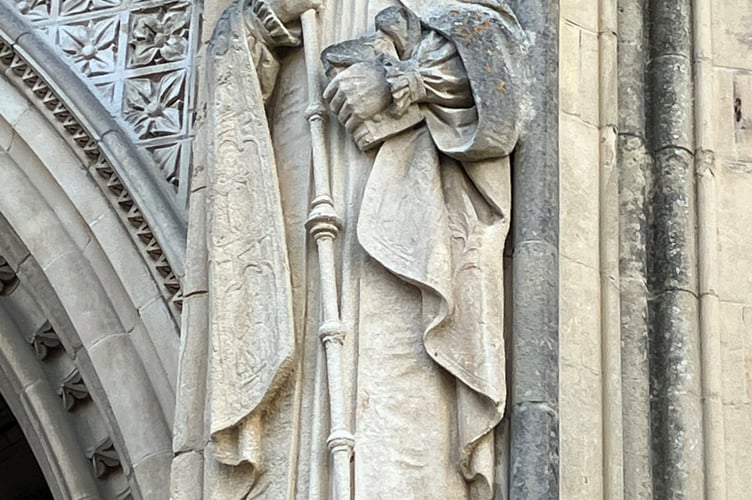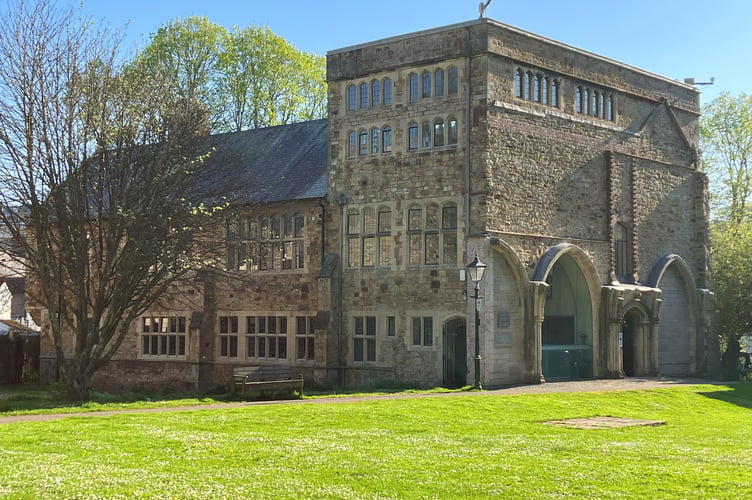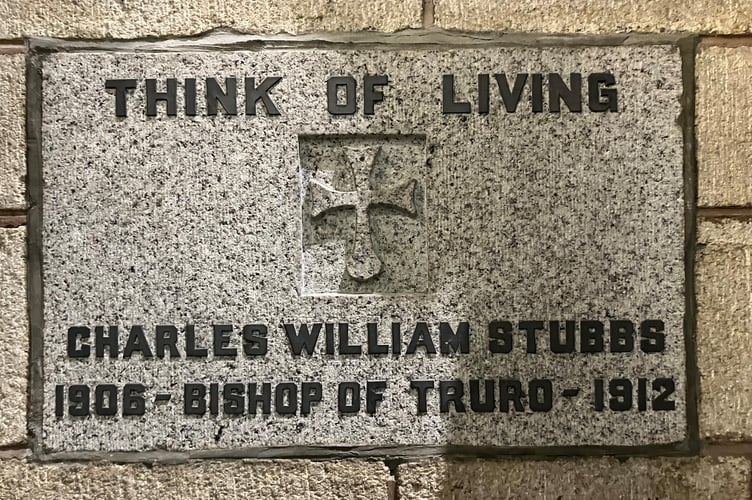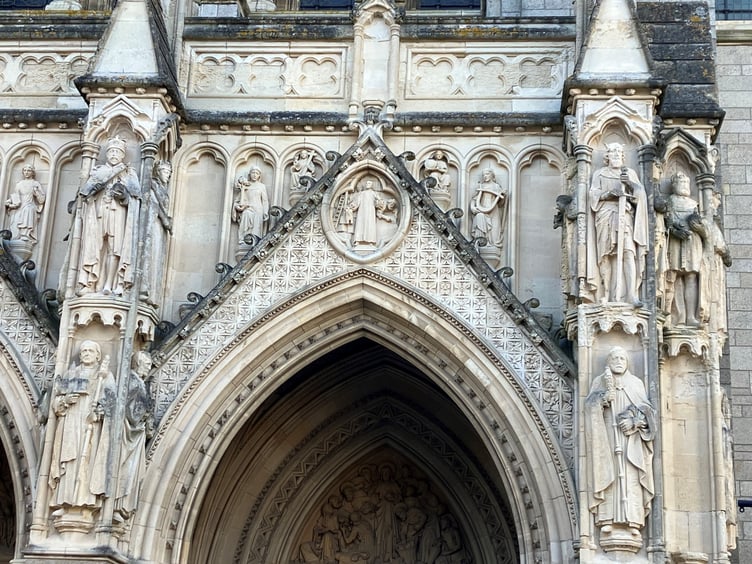Have you ever seen a new bishop installed at a cathedral? It’s not surprising if the answer to that is ‘no’, writes Judith Field.
There have been only 16 Bishops of Truro and 8 “suffragan” (sub-) Bishops of St Germans in almost 150 years, since Cornwall’s diocese achieved independence from Exeter in December 1876.
Independence meant that for the first time since 1046, Cornwall was entitled to its own bishop. Edward White Benson founded Truro Cathedral in 1880, and his creative vision is reflected in the ‘Gothic Revival’ style of the building.
The second and third bishops (Wilkinson and Gott) then had the extraordinary privilege of seeing it rise from the ground, and the project was completed under the fourth bishop, Charles Stubbs, 30 years after the first stone was laid.
This is why, facing you as you enter the great West Door, you are welcomed by Benson (flanked by Wilkinson and Gott) on your left side and Stubbs on your right. A medallion overhead illustrates the craftsmen who carried out the work on the cathedral.

Charles Stubbs was the son of a Liverpudlian grocer. Called to the priesthood, he served a number of deprived parishes, including one in Buckinghamshire where most of the population was destitute and his closest neighbours included the village rat catcher. In industrial Sheffield, he witnessed trade unionists struggle to establish the most basic workers’ rights.
Like the late Pope Francis, he never forgot these early experiences. He was an active campaigner on social justice issues all his life, even when elevated to Dean of Ely Cathedral and, 13 years later in 1906, Bishop of Truro.

Bishop Stubbs was, unashamedly, a Christian Socialist who believed: “True religion is that which really helps human progress.” In 1887, he joined the campaign for a legally-enforced Living Wage “to enable [a worker] and family to live a decent, a joyous, and a reasonable life”. He was still campaigning in 1912, the year he died prematurely of cancer aged only 66. Incredibly, it took more than another 100 years before the Living Wage was finally introduced, in April 2016.
During his time in Truro, Stubbs and his wife Hettie also worked hard to raise the funds to complete Cornwall’s cathedral, the only new one to be built in England for over 600 years (since Salisbury from 1220). At last, a wealthy friend called Jane Ellen Hawkins generously donated £20,000 in memory of her husband – enough to complete the Western towers and build the Cathedral School that stands alongside the Cathedral Green. Its top floor is still known as the Hawkins Laboratory.

The epitaph on Bishop Stubbs’ memorial reflects his beliefs and reads simply “Think of living”. If you would like to witness a new chapter in the history of the Bishopric of Truro, the seventeenth Bishop, David Williams, will be installed in his ‘cathedra’ (ceremonial seat) at a free ‘service of welcome’ at Truro Cathedral on Saturday, May 17 at 11am. For details, see www.trurocathedral.org.uk




.jpeg?width=209&height=140&crop=209:145,smart&quality=75)
Comments
This article has no comments yet. Be the first to leave a comment.